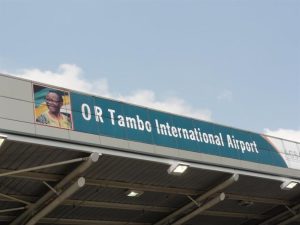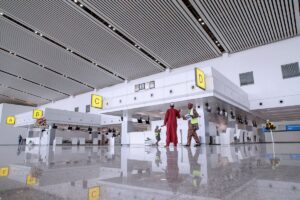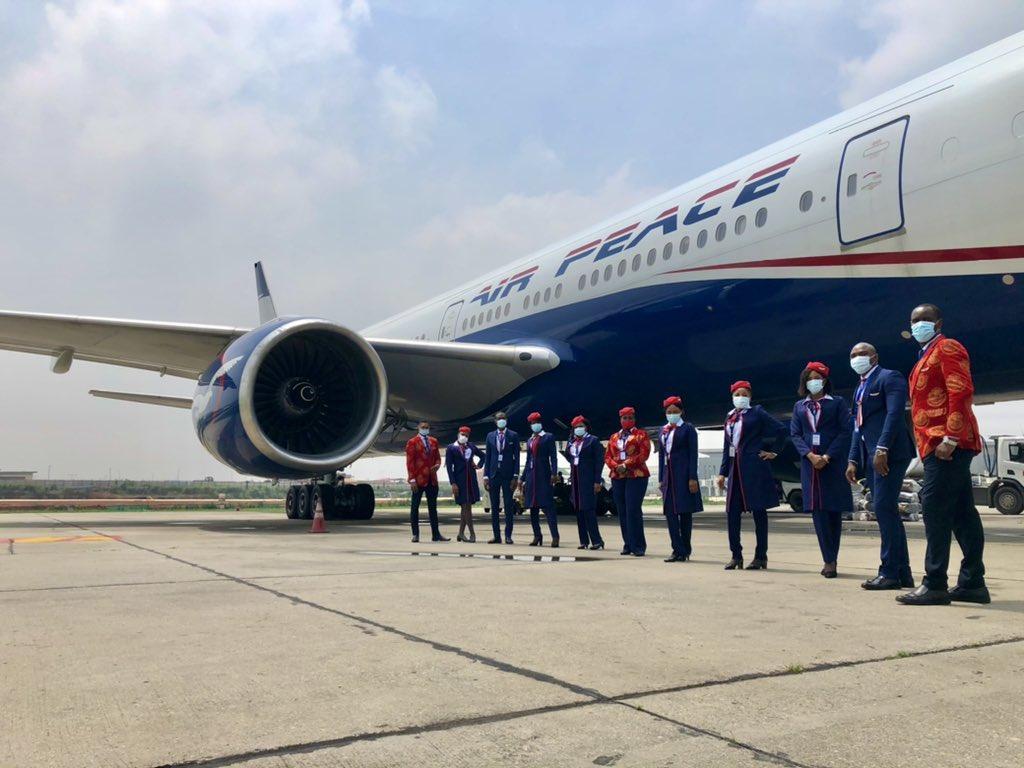
For Nigeria to develop its air transport sector and raise its contribution from the current 0.6 per cent to five per cent, which is approximately $14. 166 billion annually, it has to develop hub airport built around one or two major carriers, Executive Director and Chief Operating Officer of Ibom Air, Mr. George Uriesi has said.
He said Nigeria currently has originating and destination airports but needed a hub airport where passengers could be funneled to other airports from the hub.
According to him, if the Murtala Muhammed International Airport (MMIA), Lagos, for example, is a hub airport, all arriving passengers will connect to all other airports from Lagos.
In June 2020, the International Air Transport Association (IATA) released a report showcasing the significant contribution of air transportation to the national economy by providing 241, 000 direct and indirect jobs and contributing $1.7 billion, to the nation’s economy, which represents about 0.6 per cent. It was projected that in the next 15 to 20 years, with proper planning, this can increase to five per cent, with projected contribution of about $14.166 billion per annum.
But this is predicated on taking the right actions to boost business in the sector and the primary demand is the development of airport infrastructure to elevate the facilities to compete with that of OR Tambo International Airport, Johannesburg, Cape Town International Airport and Cairo International Airport.
Uriesi who was a former Managing Director and Chief Executive of the Federal Airports Authority of Nigeria (FAAN) and former General Manager, Cape Town International Airport, South Africa, explained what it would entail for Nigeria to have major airports that meet the standards of the aforementioned airports which are some of the best in Africa.
“Let me start with OR Tambo and Cape Town. Both airports are part of the network of ACSA (Airport Company of South Africa) airports, which were designed as part of an overarching strategy. OR Tambo was designed to be the hub airport of the network, funneling all inbound, connecting traffic from the rest of the world into Southern Africa and channeling all outbound connecting traffic from Southern Africa to the rest of the world. So only ORT would be a hub airport in the network and was designed in very close cooperation with SAA (South Africa Airways), the home base carrier, whose strategy the airport needed to key into.
“Cape Town on the other hand, was designed as an Origin and Destination (O&D) airport, with traffic specific to it. For instance, you couldn’t book a flight into South Africa through Cape Town, to connect to anywhere else immediately. You would have to do at least 24 hours in Cape Town first before you could connect. Same applied to Durban on a much lesser scale. And these were deliberate designs so as not to cannibalize the hub traffic for which ORT was built,” he said.
So, if the hub strategy is developed in Nigeria, Lagos may become the hub and passengers will be distributed from there, but it will need a major local carrier or two major carriers to distribute passengers from the hub airport.
Uriesi explained the main things that informed a hub airport, saying it would cost hugely to develop one but it should rather be looked at as an investment rather than cost because when established it would generate revenue, create jobs and enhance other subsidiary services.
“First, to develop a hub airport, you must have a strong, home-base carrier in support of whose strategy the airport makes the risky investments. It’s a symbiotic business relationship. A hub airport is an airport where a significant number of its passenger traffic is transferring from one flight to another and not originating or terminating there. It’s a very different business model from that of an origin and destination airport (which is what Nigeria currently has), Uriesi said.
He suggested that for Nigeria to build a major airport like OR Tambo International Airport in Johannesburg, there should be proper planning because it will not be out of wishful thinking, noting that currently the airports in Nigeria were designed for originating and terminating passengers; not for transfer traffic, but for hub airport to be developed, Nigeria will equally develop major airlines that will buoy the airport in terms of passenger distribution.

“In order to begin to develop our airports for transfer traffic, a lot has to be done in synergy between the airports and itheir home base carriers. One thing is the development of the right supporting infrastructure. But a key enabling element is the fact that a whole new orientation would be required for this from all the players because the decision a passenger takes to fly an airline includes the perception of the airport experience at its hub where you transfer.
“For instance, it may seem ok to harass originating and terminating passengers at an airport and get away with it, but it would be tantamount to a hub airport shooting itself in the foot, if it allows its transfer passengers connecting through it to be harassed. That airport would never develop into a hub because nobody would want to fly through it again after one harassment. So for Nigeria, to even begin to develop a hub, we would need to first develop a collective ‘hub mindset’. This is a total paradigm shift from how we currently perceive the purpose of our airports,” he further said.
Uriesi said it would take a few years of focused and disciplined, collective action to turn around the perception of Nigeria’s major airports to the ones where passengers from around the continent and beyond would feel comfortable to book transfer flights through and the country would have to make it easy for transfer passengers and demonstrate this over a period of time, to allow for perceptions to change.
As Nigeria has been harping on giving out the major airports in concession, Uriesi said that what is important is the commitment to do something directly, noting that concessioning the airports may not be the solution if there is no thought out plan to build the needed infrastructure and adopt ‘professional business management’, adding that some of the best airports in the world are owned by the state.
“Put differently, the question before us is when will we be ready to ‘let go’ of these serious businesses and leave them to be run professionally and seriously, in the best interests of our country? When we answer this question, then we can talk models. But so far, we seem to have just been tinkering,” he said.

Uriesi, however, expressed optimism that this could be done.
“Let us not write off our ability to deliver a proper hub airport and airline operation in this country so soon. I think it is coming. I think we might see an example of how to do things properly soon. We have people with the right mix of experience, exposure, knowledge, ethical orientation, capability and discipline in our industry. And we are Nigerians, for heaven’s sake! We can do anything when we truly set our minds to it,” he said.






